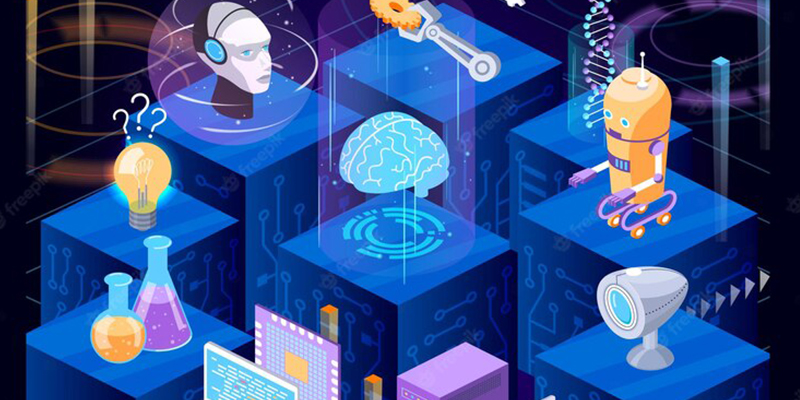Today’s digital workplace is fast-paced, innovative, and collaborative. But unfortunately, it’s also fragmented, chaotic, and resource-intensive. Employees spend hours tracking documents and coordinating meetings, information isn’t readily accessible when needed most, and valuable team time is spent on menial tasks like finding files or searching for email attachments. In other words, the current state of digital operations is a mess that needs fixing fast. Luckily, artificial intelligence (AI) can relieve your employees’ burden by streamlining their workflows and making information readily available when they need it most. Read on to learn how AI can help modernize your digital workflow.
AI and the digital workplace
The digital workplace provides a collaborative and mobile work environment that allows employees to work remotely and seamlessly share information. Artificial intelligence, or AI, is the computer-generated technology programmed to complete tasks that would typically require human intelligence. The digital workplace is the perfect place to use AI to automate tasks that would otherwise be time-consuming and require a lot of human effort. Since AI is programmed and can’t learn new tasks like humans do, the digital workplace must be designed to work best with AI. AI is great at completing repetitive tasks quickly and accurately.
Streamline repetitive tasks
Document management systems are designed to collect, manage and store information. But as the number of documents increases, employees struggle to keep up. AI can help employees keep up with ever-growing document volumes by streamlining repetitive tasks. For example, AI-enabled document recognition automatically enables you to organize documents with a simple scan. AI can also automatically create folders for new documents uploaded to a shared folder, which helps employees quickly locate files when they need them. Organizing documents into folders is a repetitive task that can be automated. AI-enabled systems allow you to create rules triggered whenever a new document is added to a specific folder. You can then let the system know which folder it should move the document into. Similarly, AI can help you automatically recognize the contents of a document. This makes it easier for employees to find the documents they need by allowing them to search by content rather than by title.
Make information readily available
When employees rely on physical files to access information, they spend countless hours tracking down documents and updating information to ensure it’s up to date. AI can help cut down on this administrative work by making information immediately available to employees when they need it. For example, AI-enabled search solutions allow you to instantly search for information from a central system, such as a company intranet or document management system. This will enable employees to find the information they need without multiple sources quickly. Similarly, AI can help you create a knowledge base that houses frequently asked questions and documentation related to your products and services. Again, this enables employees to quickly access the information they need without going through multiple systems or asking their colleagues for help.
Track latest versions of files
As files are shared and edited by employees, it’s essential to know who made the changes and when. AI-enabled systems allow you to track the latest versions of files, which lets you see when they were edited, who made the changes, and what changes were made. This helps organizations complete their digital transformation. Employees are more productive when they don’t have to waste time digging up files and manually updating them. Document management systems enable you to track the latest versions of files and automatically notify users when those files are outdated. This tracking functionality is beneficial for regulated organizations that must keep track of changes. AI can help these organizations spot patterns in changes, which can help them identify potential issues.
Recognize speech and voice commands
As the workforce continues to evolve and more employees work remotely, it’s essential to build communication channels accessible to everyone, regardless of their location or work environment. AI can help you implement communication channels, including voice and speech recognition, that quickly help employees get in and out of their digital systems. This can lead to a smoother collaboration experience. Speech and voice recognition allows employees to execute commands by speaking or pressing a button on their device. Employees can use these communication channels to log in, navigate their digital systems, add new documents, etc. This communication assistance enables employees to manage their tasks and projects more effectively.
Summing up
As the digital workplace continues to expand and evolve, employees will increasingly rely on artificial intelligence to complete repetitive tasks and provide readily available information. What’s more, AI can help you manage your employees’ expectations. For example, AI can notify employees when it’s unable to complete a task, which allows them to avoid false expectations. With the help of AI, you can modernize your digital workflow and save your employees hours of administrative work each week. To know more about how we can help, please visit https://www.deepdatum.ai.


Leave A Comment